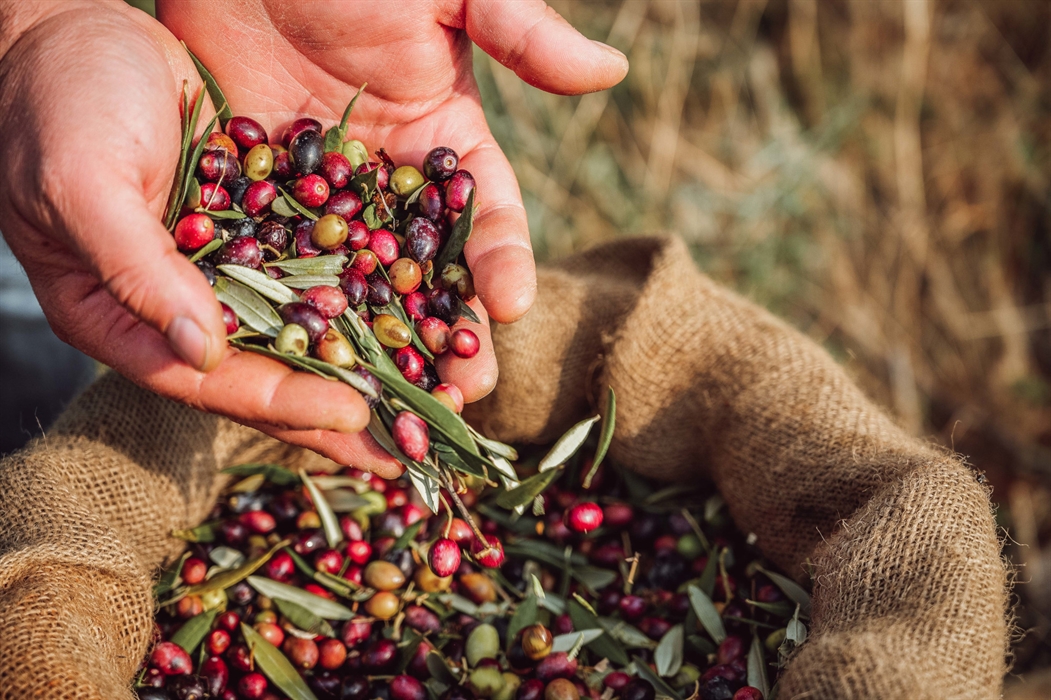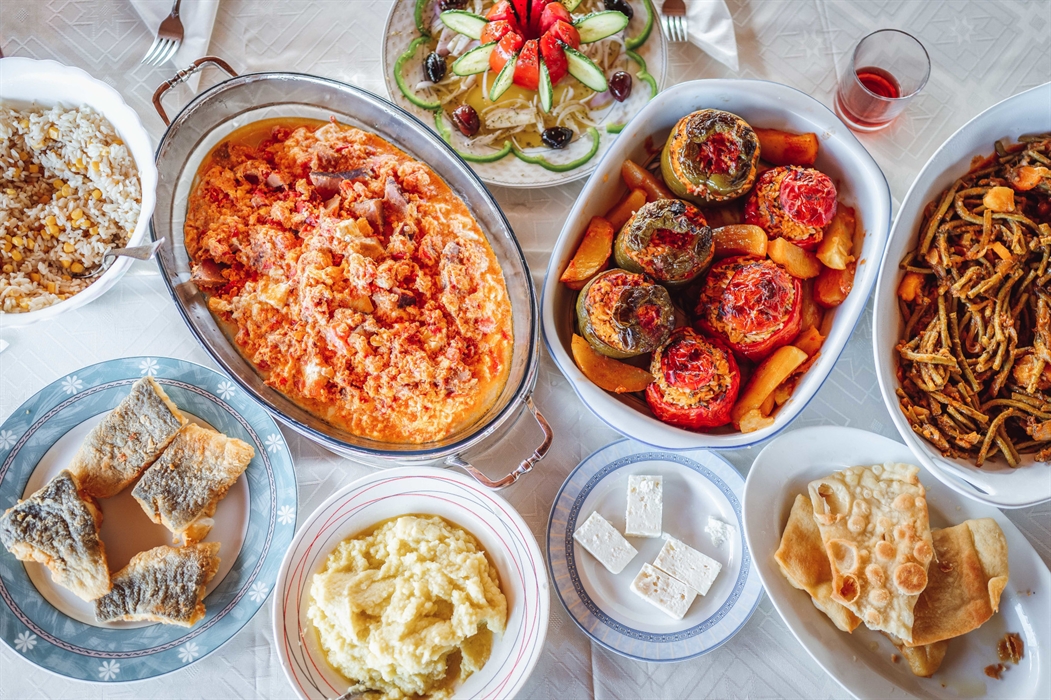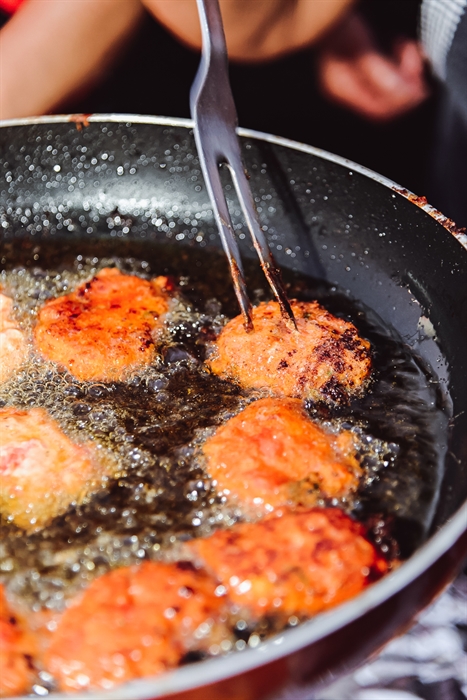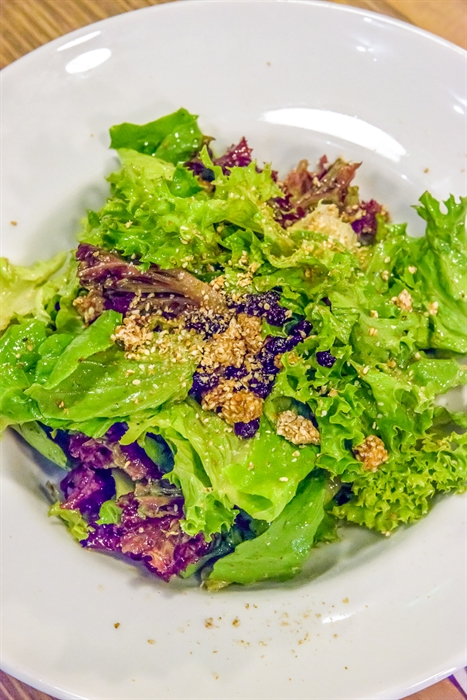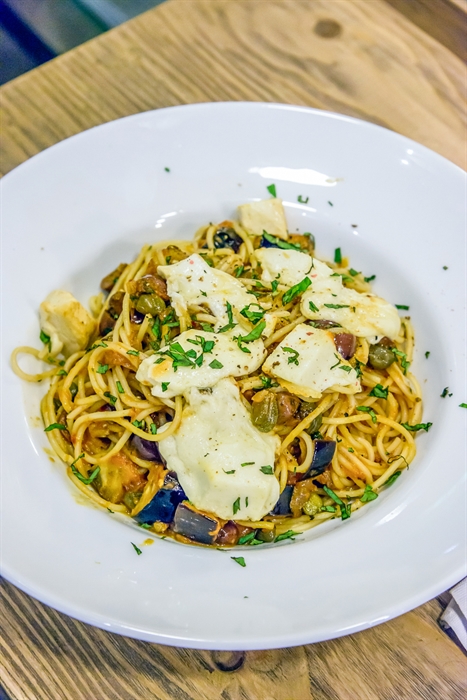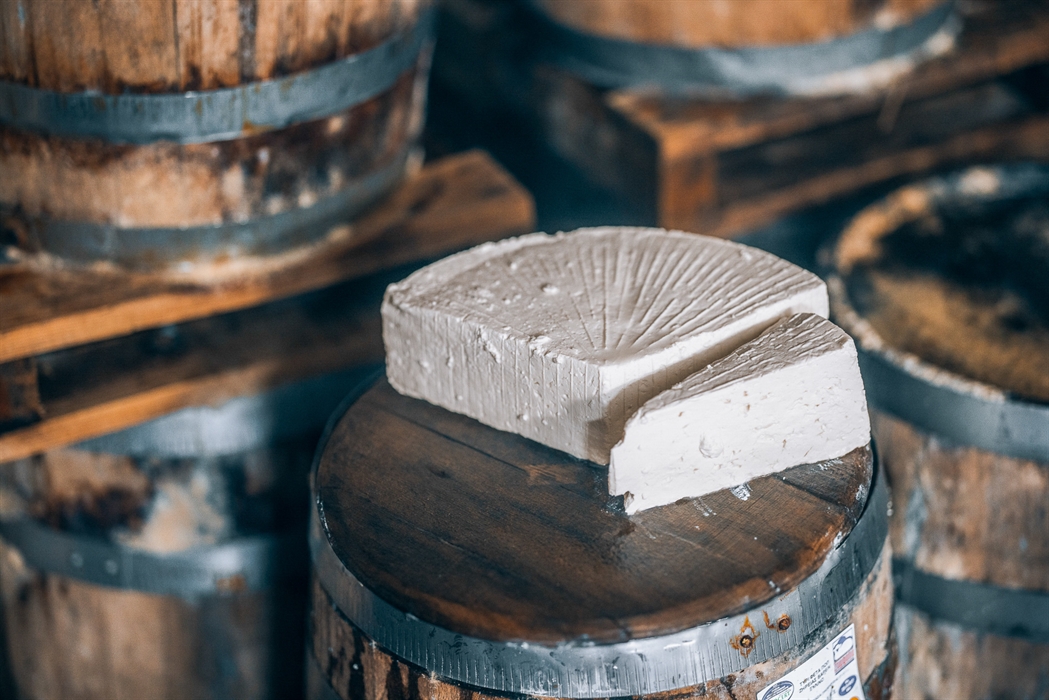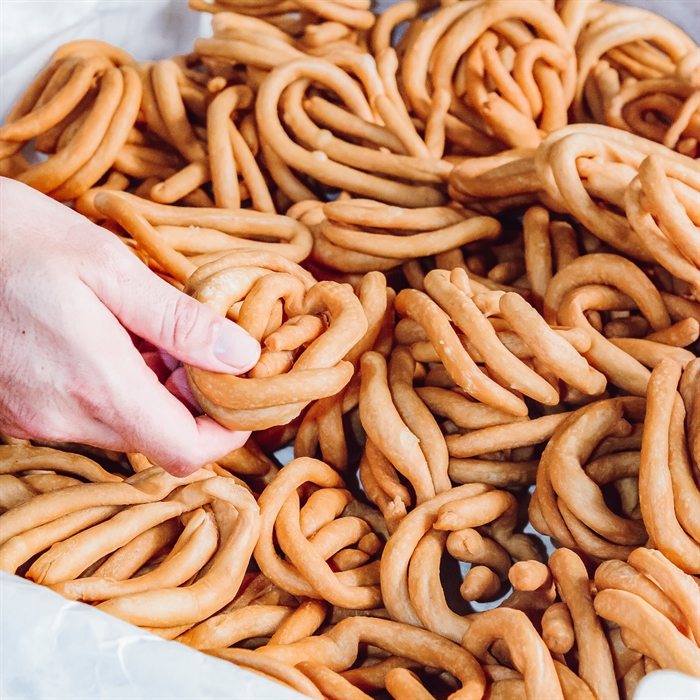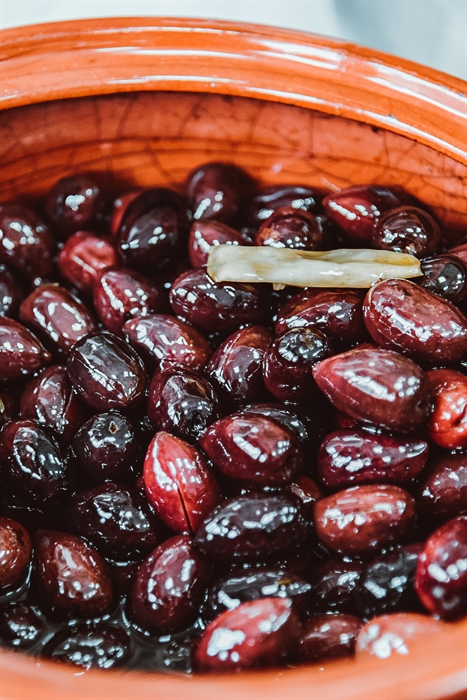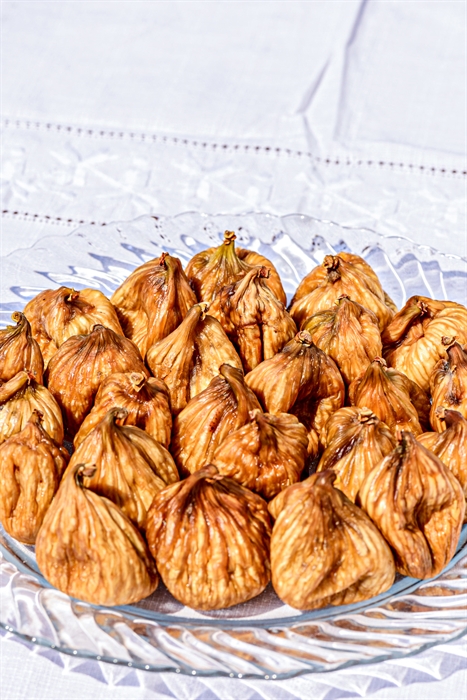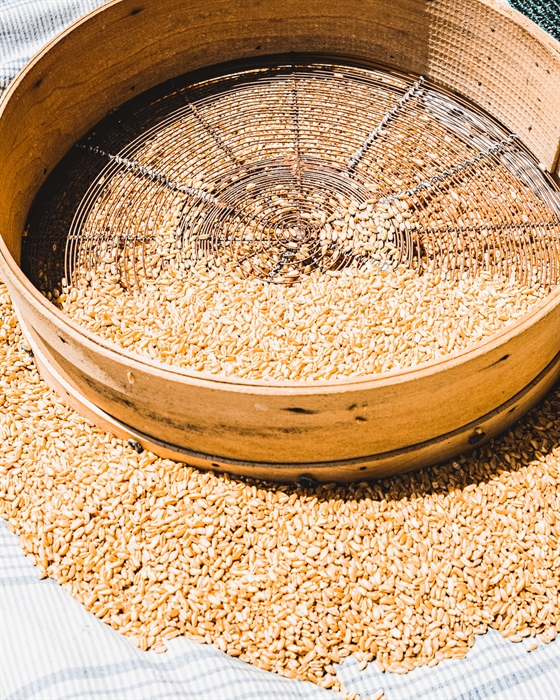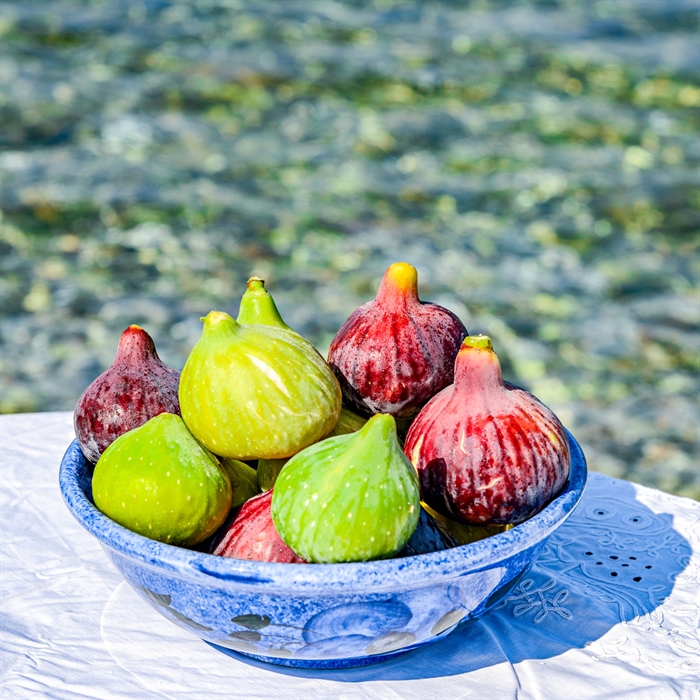Products, wines and traditional recipes from Messinia
Messinia is rightly famous for its olive oil and olives, but that’s by no means the end of the story! The land is extremely fertile, so a wide selection of other crops is grown here. And, of course, the traditional local dishes are delicious, especially when accompanied with wines from Messinian vineyards.
The great Greek politician Charilaos Trikoupis summed up the fertility of the Messinain soil by saying “even if you plant umbrellas, they’ll bear fruit”. And he wasn’t alone in thinking this -many centuries earlier Euripides had described it as "kallicarpo", meaning “land of the good fruit.”
So, let’s have a look at some of the wonderful produce grown here;
Messinia is famous for its excellent olive oil and olives (both P.D.O). In fact, Messinian olive oil is considered one of the oils best in the world and so much is produced in the picturesque olive groves all over Messinia that there are approximately 250 olive mills in the region.
Producing and trading raisins has a long history in the region. They are also used in traditional recipes such as stuffed tomatoes, cod with a tomato sauce and raisin bread, and in sweets and pastries.
Figs. Eaten fresh or dried, covered with sesame seeds and bay leaves or filled with nuts, Messinian figs are a must. And then, of course, you need to try the local fig paste, fig conserves and fig jam.
Messinians eat a lot of wild artichokes. They also grow green beans and broad beans which are either dried or eaten raw.
Cheese. Graviera, mizithra and feta cheese are produced with milk from the area. Sfela (a semi-hard white brine cheese) is designated as a PDO product. Try it in a salad, in a pie, or on its own.
Peanuts They are grown and sold in the area.
Pastelli. Sesame seed bars are sold in all local food shops and used to be a traditional wedding treat.
Messinian diples (fried dough sheets with honey), milk pie, and custard and filo pastries are some of the most famous and traditional sweets you’ll find in the region -and in many other places all over the Peloponnese.
Fruit and vegetables are produced all over Messinia; they are delicious and you’ll find a good selection of them in the rich Messinian salads. Some typical products are the thick beef tomatoes, Alagonia potatoes and melons.
TRADITIONAL RECIPES
Some traditional specialties to watch out for are: Spit-roast piglet, pork with celery, cod chiladia (with a tomato sauce), pumpkin flowers and pumpkin croquettes, scrambled eggs and tomato with salted pork and sfela cheese, stuffed tomatoes, pasta with myzithra cheese and oil, sour trachana (fermented grain and yogurt) with a tomato sauce.
The area also has many old traditional recipes such as artichokes with eggs, chicken with Kalamatian figs, and the koutalides and petoules (little pancakes) which were made on “Cheese Sunday” with flour, water and olive oil and sprinkled with mizithra cheese.
The famous lalaggia. These dough strips are made with flour and water and then folded. Once they have been fried in hot olive oil they are really delicious! Traditionally, they were eaten with sfela cheese, olives and sausages. They are served all over Messinia, but also in Laconia.
Syklino. The famous salted pork from Mani that is preserved in the meat’s fat. The pork is smoked over local aromatic herbs and then boiled in orange juice which is flavoured with herbs. The local sausages are also made in the same way. You will find syklino as an appetizer or in omelettes, pizzas, pies, salads, etc.
Mani pies. The pastry for traditional Mani pies is made with very few ingredients - mainly flour and water. The pies are fried in olive oil and then served with honey or syrup poured over them.
VINEYARDS AND WINE
Messinia’s connection to winemaking goes back at least 3000 years. In the Iliad (Rhapsody I) Homer tells us that Agamemnon intended to offer Achilles gifts to persuade him to re-enter the battle as the Achaeans were in dire need of help. One of these gifts was "ampeloessa Pidasos", i.e. today's Methoni (according to prevailing opinion). Homer describes the area as "ampeloessa" ("full of vines") to emphasise how valuable this gift was.
Messinia dry white and red wine are Protected Geographical Indication (PGI) products. The main Greek varieties cultivated here are Roditis, Fileri, Fokiano, Assyrtiko, Moschofilero, Agiorgitiko and Mandilaria. Cabernet Sauvignon, Cabernet Franc, Grenade Rouge, Merlot and Carignen are also grown in the area.
Despite the fact that there are a lot of wineries in Messinia, not many of them offer tours or allow visitors. One winery you can visit is the "Nestor" Messinian Agricultural/Wine Cooperative in Pyrgos Trifylias (https://nestorwines.gr). In 1954, 800 Messinian winegrowers joined forces and founded the Cooperative. In 2015, they established a partnership with the Spyros Lafazanis family, which is based in Nemea. Today "Nestor SA" has 200 grape growers who are members of the Cooperative. Most of the other wineries which are open to the public are on the western coastline.
You can read more about the wine routes in the Peloponnese Wine Roads.
The internationally recognised Messinia balsamic vinegar is also produced in the area.
There are also distilleries in the area and it is worth trying local spirits -such as ouzo, raki, liqueurs and cognac.
Categories
Weather
Σχετικό περιεχόμενο χρηστών (UGC)
Ενημερωθείτε για ενδιαφέροντα θέματα γύρω από τον προορισμό μέσα από το περιεχόμενο των χρηστών μας
Discover 7 hidden gems of the Peloponnese
Many of you may have already visited some of the most renowned attractions…
TOP 10 archaeological museums in the Peloponnese
Olympia, Mycenae, Epidaurus, Diros Cave, Ancient Corinth, Messene and…
TOP 10 Castles in the Peloponnese
Castles galore! Mystras, Monemvasia, Palamidi, Methoni, Koroni,…
Newsletters
- About us
- FAQ's
- Map
- Tourism information centers
- Disclaimer
- Sitemap
- Our brand
- Media roum
- Adding your bussiness
- Corporate
- MICE

Peloponnese. Greece beyond the obvious





Design and creation from Cosmote
Marinas and Moorings
Diving centers
Get inspired
- Media gallery
- Blog
- The Peloponnese in the media
- Your feedback
- Users' general content
- Users' local products
- Users' events content
- Ask a local
More
- Accommodation
- Travel agencies
- Restaurants
- Services
- Destinations Map
- Weather
- Public transport
- Events
- Frequently asked questions
- Useful phones
- B2B
- Destination Data
- Contact

